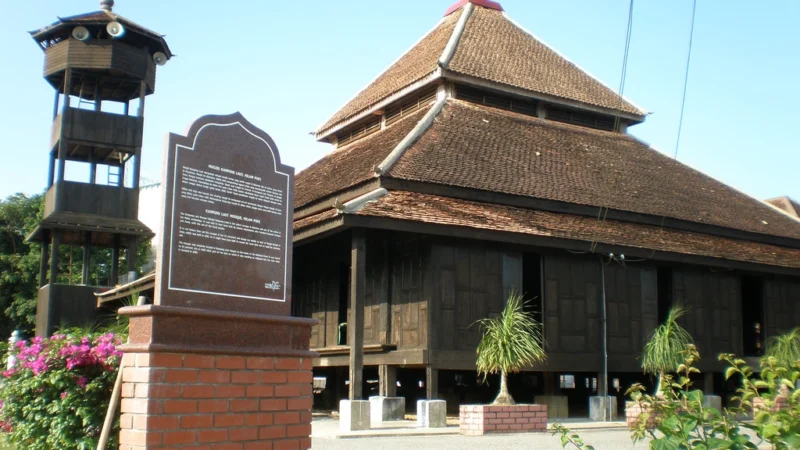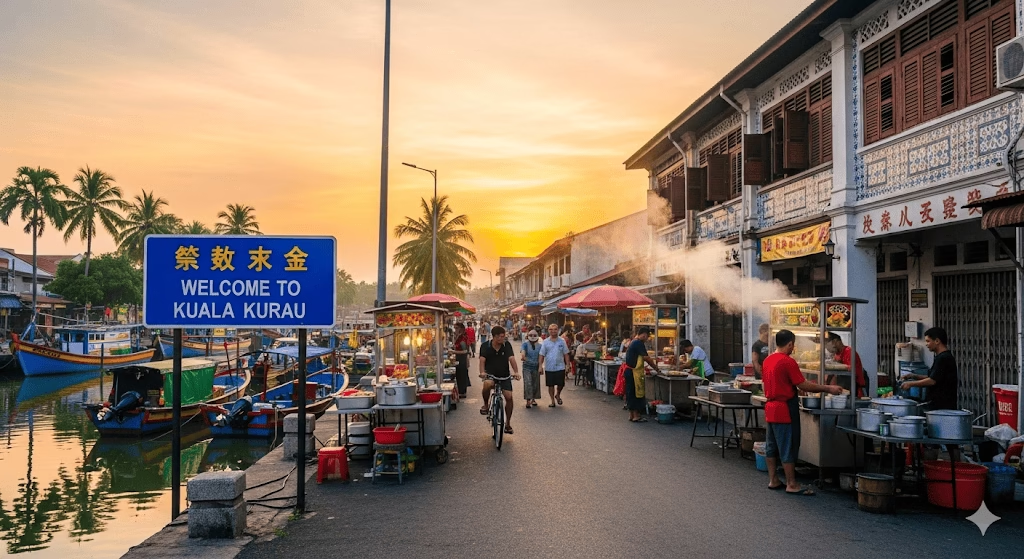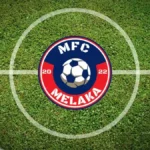Masjid Kampung Laut- Malaysia’s Oldest Mosque and a Timeless Islamic Heritage in Kelantan

Location: Masjid Kampung Laut, Jalan Kuala Krai, Kota Bharu, Kelantan, Malaysia
Introduction
Nestled in Nilam Puri, Kota Bharu, Masjid Kampung Laut stands as one of the most important historical and religious landmarks in Malaysia. Believed to be built in 1676, it is the oldest surviving mosque in Malaysia and a shining example of traditional Nusantara Islamic architecture. The mosque not only serves as a place of worship but also as a symbol of spiritual devotion, community unity, and architectural brilliance that has withstood the test of time.
Historical Background of Masjid Kampung Laut
The origins of Masjid Kampung Laut trace back to the late 17th century, when it was constructed in Kampung Laut, Tumpat, along the Kelantan River. Built entirely of timber by Kelantanese Malay craftsmen, the mosque originally stood near the seashore, serving as a spiritual hub for local fishermen and traders.
In 1966, severe flooding along the Kelantan River partially destroyed the mosque, leaving it in an unsafe condition. To preserve this national treasure, the Malaysian Historical Society relocated the structure in 1967 to Nilam Puri, where it was carefully restored by skilled local artisans. The mosque’s relocation ensured its survival and safeguarded its architectural and cultural significance for future generations.
Architectural Features and Design
Masjid Kampung Laut is a masterpiece of traditional Malay and Javanese-inspired architecture, designed using natural materials and sustainable construction methods.
1. Nusantara Style
The mosque’s Nusantara-style design reflects the cultural ties between Malaysia, Indonesia, and southern Thailand. Its design is deeply rooted in Islamic symbolism and Malay craftsmanship.
2. Three-Tiered Meru Roof
The most striking feature is its three-tiered Meru (pyramidal) roof, symbolizing the spiritual ascent toward Allah. The roof’s edges end in ekor itik (duck-tail) forms, which represent the head and tail of a dragon — a symbol of protection and strength in local mythology.
3. Traditional Timber Craftsmanship
Built without the use of nails, the mosque relies on wooden joints and pegs for structural integrity. Its floors are made of chengal wood, known for durability, replacing the original nibung (mangrove palm) flooring.
4. Balai Lintang and Wakaf Orang Kaya
Two notable additions enhance the mosque’s uniqueness — the Balai Lintang (foyer hall) built in 1908 and the Wakaf Orang Kaya (dignitary’s gazebo) built in the 1950s by Orang Kaya Hussein. These elements serve as gathering areas for the community and reflect Kelantanese social traditions.
Cultural and Religious Significance
Masjid Kampung Laut is not only a place of worship but also a living museum of Malay heritage. For over three centuries, it has been a center of Islamic teaching, community gatherings, and cultural preservation. Its construction style — similar to early Javanese mosques — highlights the shared religious and cultural identity of the Malay Archipelago.
Today, it continues to attract students, historians, and tourists eager to explore Malaysia’s earliest Islamic roots and traditional architecture.
Visiting Masjid Kampung Laut
Address: Masjid Kampung Laut, Jalan Kuala Krai, Kota Bharu, Kelantan, Malaysia
Visiting Hours: Open daily; visitors are encouraged to visit outside prayer times.
Admission: Free (respectful attire required).
How to Get There
- By Car: Approximately 10 km from Kota Bharu city centre, easily accessible via Jalan Kuala Krai.
- By Public Transport: Visitors can take a local taxi or Grab service directly to the mosque.
Nearby Attractions in Kota Bharu
- Masjid Muhammadi: The official state mosque of Kelantan, showcasing grand Islamic design.
- Istana Jahar: A royal palace turned museum, displaying Kelantan’s royal history.
- Siti Khadijah Market: One of the most vibrant markets in Malaysia, known for local crafts and food.
FAQs About Masjid Kampung Laut
Q1: Why is Masjid Kampung Laut famous?
It is the oldest mosque in Malaysia, representing the earliest form of traditional Malay-Islamic architecture.
Q2: When was it relocated to Nilam Puri?
It was moved in 1967 after major floods in 1966 damaged the original site at Kampung Laut, Tumpat.
Q3: What architectural style is used in the mosque?
The mosque follows the Nusantara (Malay Archipelago) style, featuring a tiered roof, wooden joinery, and symbolic motifs.
Q4: Is it open to tourists?
Yes, visitors are welcome outside of prayer hours, provided they dress modestly and respect the sanctity of the site.
Conclusion
Masjid Kampung Laut stands as a symbol of Malaysia’s Islamic legacy, cultural resilience, and architectural ingenuity. Built over 300 years ago, its preservation reflects the deep respect Malaysians hold for their religious and cultural heritage. A visit to this mosque offers not just a glimpse into 17th-century craftsmanship, but also a profound connection to the spiritual and artistic roots of the Malay world.
Whether you are a history enthusiast, cultural explorer, or spiritual traveler, Masjid Kampung Laut in Kelantan is an essential stop to experience Malaysia’s oldest and most revered mosque.














Comments are closed.